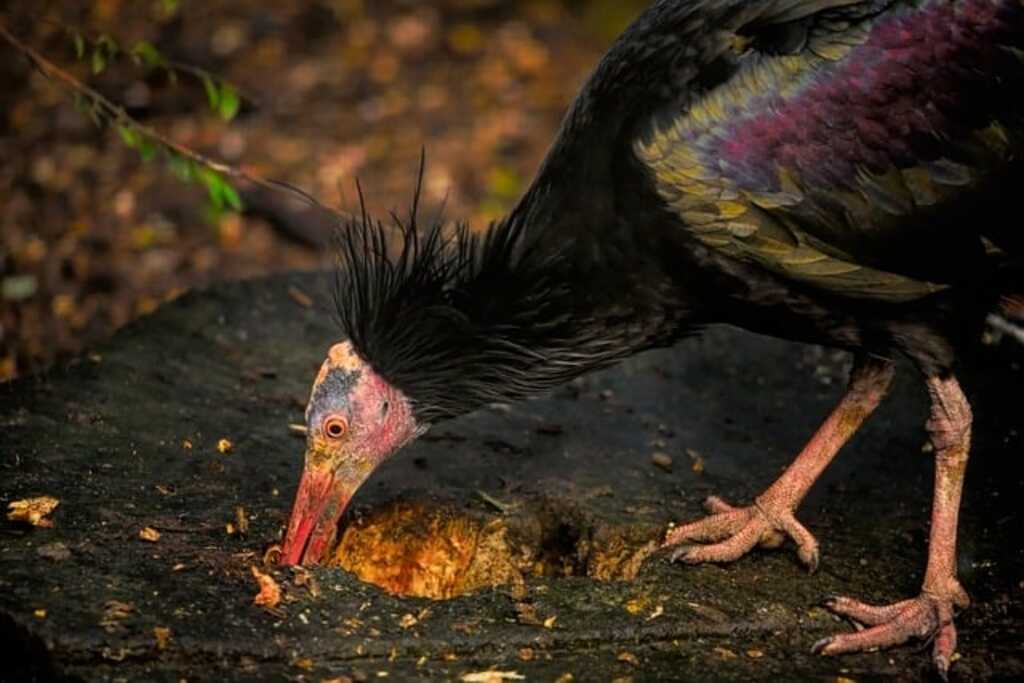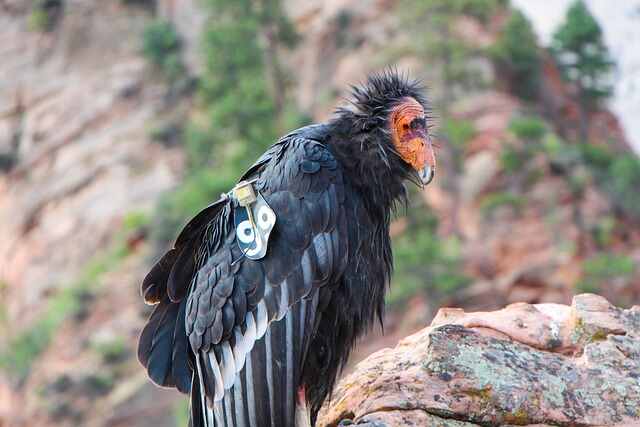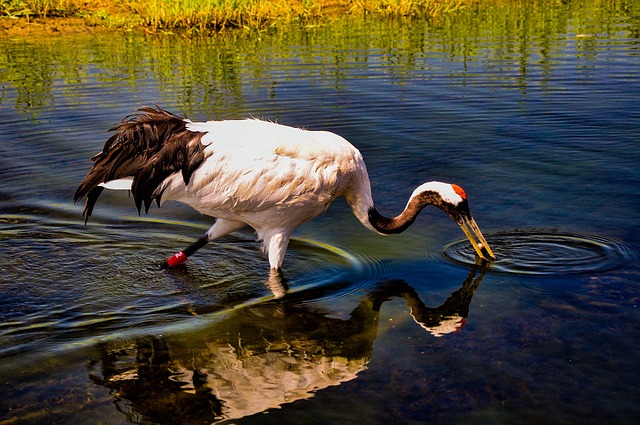Do you know where the world’s most imperiled avian species reside? Where are the most endangered bird species found? The kaleidoscope of colors, melodies, and evolutionary adaptations that comprise bird diversity are threatened by habitat degradation, climate change, and hunting.
A myriad of avian species teeter on the brink of extinction, from the iconic flightless Kiwi to the enigmatic Kakapo, the majestic Snowy Owl to the majestic California Condor.
In this article, we’ll uncover the geographic locations of some of the globe’s rarest birds, and explore the pressing need for conservation efforts to save these magnificent creatures.
Table of Contents
Understanding Endangered Bird Species
To better understand the challenges facing endangered bird species, it is important to explore the factors that contribute to their decline. One of the main threats to bird populations is habitat loss, which occurs when natural habitats are destroyed or altered by human activities such as agriculture, urban development, and logging.
Climate change is another major factor affecting bird species, as changes in temperature and weather patterns can disrupt migration and breeding patterns, as well as impact the availability of food and nesting sites. In addition, invasive species, pollution, and hunting can also contribute to the decline of bird populations.
To determine which bird species are endangered and in need of protection, various criteria are used, such as the number of individuals remaining in the wild, the size of their habitat, and the level of threat they face.
Organizations such as the International Union for Conservation of Nature (IUCN) provide a standardized system for classifying the conservation status of bird species, with categories ranging from “Least Concern” to “Critically Endangered”.
Overall, it is important to recognize the complex interplay of factors that contribute to the endangerment of bird species, and to prioritize conservation efforts that address these underlying causes.
By doing so, we can help protect not just individual species, but entire ecosystems and the many species that depend on them.
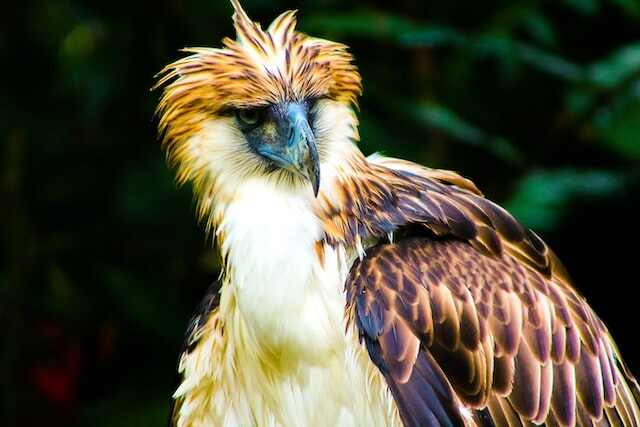
Conservation Efforts for Endangered Bird Species
Conservation efforts are crucial in protecting endangered bird species and ensuring their survival. There are many ways to approach conservation, including habitat restoration, captive breeding programs, and public education and outreach.
One important aspect of conservation is habitat restoration, which involves identifying and protecting critical bird habitats, as well as working to restore degraded or destroyed habitats. This can include initiatives such as reforestation, wetland restoration, and invasive species removal.
Another conservation strategy is captive breeding programs, which involve breeding endangered bird species in captivity and releasing them back into the wild. These programs can help to increase the number of individuals in a species and provide genetic diversity, which can increase the species’ chances of survival.
Public education and outreach are also important for raising awareness of endangered bird species and the need for conservation efforts. By increasing public understanding and support for conservation, we can help to ensure that bird habitats and populations are protected for future generations.
Conservation efforts have already made a significant impact in protecting some endangered bird species. For example, the Mauritius kestrel, a species that was once on the brink of extinction, has made a remarkable recovery thanks to conservation efforts such as captive breeding and habitat restoration.
While there is still much work to be done in protecting endangered bird species, these conservation efforts offer hope for the future of these remarkable creatures. By working together to protect bird habitats and populations, we can help to ensure a more sustainable and biodiverse world.
Where Are the Most Endangered Bird Species Found?
According to BirdLife International, the top 10 countries with the highest number of endangered bird species are Indonesia with 162, Brazil with 153, Colombia with 97,
China with 94, India 92, Peru with 92, Philippines with 91 Ecuador with 83, the United States with 88, and Mexico with 69.
The numbers reflect the total count of bird species that are classified as endangered in each country as of July 2019. This information highlights the urgent need for conservation efforts to protect these species and their habitats.
It is important to note that the list of endangered bird species is constantly changing as new data becomes available, and continued monitoring is essential to ensure the survival of these and other threatened species.
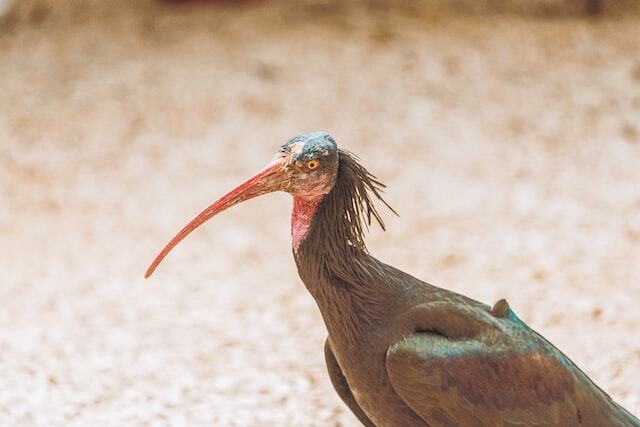
Endangered Bird Species By Continents
North America
North America is a continent that is home to many unique and endangered bird species, and is also a region where conservation efforts have had a significant impact. One of the most notable examples is the California Condor, which is found in the western part of the United States. The California Condor was once on the brink of extinction due to hunting, habitat destruction, and the use of DDT, a harmful pesticide.
In the 1980s, the species was on the verge of extinction, with only 27 individuals remaining in the wild. Thanks to an intensive captive breeding program, conservation efforts, and the elimination of DDT, the California Condor has made a remarkable recovery.
Today, the population has increased to several hundred individuals, and the species is no longer on the brink of extinction. However, the California Condor still faces many challenges, including habitat loss and fragmentation, lead poisoning from ingesting bullets, and collisions with power lines.
Other endangered bird species found in North America include the Gunnison Sage Grouse, which is found in the western United States and is threatened by habitat loss due to oil and gas drilling, livestock grazing, and development.
The Ivory-billed Woodpecker, which was once thought to be extinct, is also found in North America and is threatened by habitat loss and fragmentation. The Kirtland’s Warbler, which is found in Michigan and Wisconsin, is also endangered due to habitat loss and fragmentation.
Overall, North America is home to many unique and endangered bird species, and conservation efforts have had a significant impact on protecting and recovering these populations. However, much work still needs to be done to address the threats facing these birds and ensure their long-term survival.
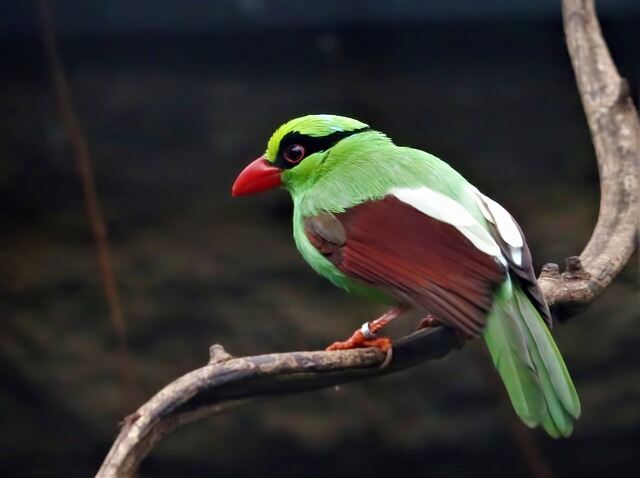
South America
South America is known for its rich biodiversity, and is home to several critically endangered bird species. One such species is the Hooded Grebe, which is found in Argentina and Chile. The Hooded Grebe is considered to be one of the rarest birds in the world, with a global population of fewer than 1,000 individuals.
The species is threatened by habitat loss due to grazing, mining, and the construction of hydroelectric dams. In addition, introduced predators such as the American Mink and the Brown Rat prey on the Hooded Grebe, further threatening its survival.
Another critically endangered bird species found in South America is the Northern Bald Ibis, which is found in Morocco, Syria, Turkey, and Ethiopia. The Northern Bald Ibis is threatened by habitat loss due to agriculture and human settlement, as well as hunting and poaching.
Conservation efforts are underway to protect and recover the species, but it remains in a precarious state. The Kagu, found only in New Caledonia, is another critically endangered bird species in South America.
The Kagu is threatened by habitat loss due to logging and mining, as well as predation by introduced species such as rats and feral cats. Moving beyond South America, the Giant Ibis is a critically endangered bird species found in Cambodia and Laos.
The Giant Ibis is threatened by habitat loss due to deforestation and hunting, and is now one of the rarest bird species in the world. Overall, South America is home to several critically endangered bird species, and conservation efforts are critical to protecting and recovering these populations.
These species face a variety of threats, including habitat loss, predation by introduced species, and hunting, and addressing these threats is essential to their long-term survival.
Europe
Europe is home to several unique and threatened bird species. The Northern Bald Ibis, which was once found throughout Europe, the Middle East, and North Africa, is now restricted to a small population in Morocco. The species is threatened by habitat loss due to agriculture and urbanization, as well as hunting and poaching.
The Regent Honeyeater is another critically endangered bird species found in Europe, specifically in Australia. The Regent Honeyeater is threatened by habitat loss and fragmentation due to land clearing, as well as competition for resources with introduced species such as the Noisy Miner.
The Forest Owlet, found in India, is also considered to be critically endangered due to habitat loss and fragmentation. The species is threatened by the clearing of forests for agriculture and timber, as well as hunting and poaching.
Moving beyond critically endangered species, Europe is also home to the Great Currasow, a large bird found in Central America and parts of South America. The Great Currasow is considered to be a near-threatened species due to habitat loss and hunting.
In addition to habitat loss, many bird species in Europe are also threatened by climate change. The Snowy Owl, which breeds in the Arctic and is found in parts of Europe, is particularly vulnerable to climate change, as warming temperatures are altering its breeding and foraging habitats.
Overall, Europe is home to a diverse range of bird species, many of which are under threat from habitat loss, climate change, and hunting. Conservation efforts are needed to protect and recover these populations, and address the root causes of their decline.
Africa
Africa is home to many unique and endangered bird species, including the African Grey Parrot, a popular pet trade bird that is threatened by habitat loss and poaching. The species is native to West and Central Africa, where it inhabits dense forests and woodlands.
The Kagu, a flightless bird found only on the island of New Caledonia, is another critically endangered bird species in Africa. The Kagu is threatened by habitat loss and predation by introduced species such as rats and feral cats.
The Northern Bald Ibis, found in Morocco, is also considered to be critically endangered in Africa. Habitat loss and hunting are the primary threats to the species, which has experienced significant population declines in recent decades.
The Bengal Florican, found in Southeast Asia, is another critically endangered bird species in Africa. The species is threatened by habitat loss due to agricultural expansion, as well as hunting and trapping.
The African Penguin, found along the coast of Southern Africa, is another threatened bird species in Africa. The species is threatened by habitat loss due to overfishing, as well as pollution and climate change.
Overall, Africa is home to a rich diversity of bird species, many of which are under threat from habitat loss, hunting, and other human activities. Conservation efforts are needed to protect and restore these populations, and address the root causes of their decline.
Asia
Asia is home to a vast array of bird species, many of which are endemic and under threat from habitat loss, hunting, and other human activities. The New Caledonian Owlet-nightjar, found only on the islands of New Caledonia, is one such critically endangered species. The species is threatened by habitat loss due to deforestation, as well as predation by introduced species such as rats and feral cats.
The Philippine Eagle, one of the world’s largest and most powerful eagles, is another endangered bird species in Asia. The species is found in the Philippines and is threatened by habitat loss due to deforestation, as well as hunting and trapping.
The Forest Owlet, found in central India, is also considered to be critically endangered. Habitat loss from deforestation and agriculture endangers the species.
The Sumatran Ground-cuckoo, found in Sumatra, is another endangered bird species in Asia. The species is threatened by habitat loss due to deforestation, as well as hunting and trapping.
The Christmas Island Frigatebird, found on Christmas Island in the Indian Ocean, is also considered to be vulnerable to extinction. The species is threatened by habitat loss and degradation, as well as introduced predators such as feral cats and rats.
Overall, Asia is home to a wide variety of unique and endangered bird species, many of which are threatened by habitat loss, hunting, and other human activities. Conservation efforts are needed to protect and restore these populations, and address the root causes of their decline.
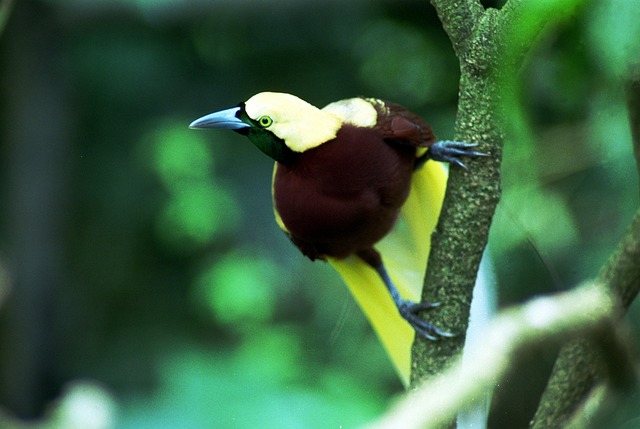
Australia and Oceania
Australia and Oceania are home to many unique and endangered bird species, including the Kiwi, which is found only in New Zealand. The species is threatened by habitat loss and introduced predators, such as cats, dogs, rats, and stoats, which prey on eggs and chicks.
The Kakapo, also found in New Zealand, is one of the world’s rarest birds, with only a few dozen individuals remaining. The species is threatened by habitat loss, introduced predators, and disease. The Kagu, found only in New Caledonia, is also under threat from habitat loss, introduced predators, and hunting.
The New Caledonian Owlet-nightjar is another critically endangered bird species found only in New Caledonia. The species is threatened by habitat loss and introduced predators.
The Hooded Pitta is another endangered bird species found in the region, specifically in Papua New Guinea and the Solomon Islands, where it is threatened by habitat loss and hunting.
The Sumatran Ground-cuckoo is another critically endangered bird species found in the region, specifically in Sumatra, where the species is threatened by habitat loss due to deforestation and illegal logging.
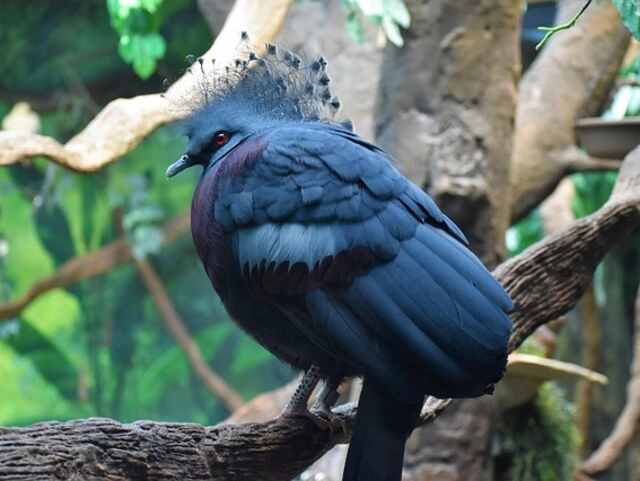
Conservation Efforts
Conservation efforts play a critical role in protecting endangered bird species around the world. Many organizations and individuals are working to promote sustainable practices and raise awareness about the importance of bird conservation.
One important conservation strategy is habitat restoration, which involves restoring degraded or damaged habitats to support healthy bird populations. This can include restoring wetlands, replanting native vegetation, and removing invasive species that can threaten bird habitats.
Captive breeding programs are another important conservation strategy, particularly for species that are at high risk of extinction in the wild. These programs involve breeding endangered birds in captivity and releasing them into the wild to boost population numbers and genetic diversity.
Protected areas, such as national parks and wildlife reserves, are also crucial for bird conservation. These areas provide safe habitats for birds to breed, feed, and migrate, and can help prevent habitat loss and fragmentation.
Many organizations are working to raise awareness about the importance of bird conservation, both locally and globally. These efforts can involve public outreach and education campaigns, as well as working with policymakers to promote sustainable practices and protect critical bird habitats.
Overall, conservation efforts are vital for protecting endangered bird species and preserving the rich biodiversity of our planet. By working together to promote sustainable practices and protect critical habitats, we can help ensure a bright future for these magnificent creatures.
Frequently Asked Questions
What are the main threats to bird species?
The main threats to bird species are habitat loss, climate change, pollution, hunting, and introduced predators.
How can we help protect endangered bird species?
There are many ways that we can help protect endangered bird species. One of the most important is to support conservation organizations that are working to protect bird habitats and raise awareness about the threats facing bird populations.
We can also take steps to reduce our impact on the environment by using eco-friendly products and reducing our use of single-use plastics. Another way to help protect birds is to participate in citizen science programs, such as bird counts and habitat surveys, which can provide valuable data to researchers and conservationists.
Are there any success stories in bird conservation?
Yes, there are many success stories in bird conservation. For example, the population of the California Condor has increased from just 27 individuals in the 1980s to several hundred today, thanks to captive breeding and reintroduction programs.
The recovery of the Bald Eagle is another success story, with the species being removed from the endangered species list in 2007. Many other bird species have also benefited from conservation efforts, including the Mauritius Kestrel and the Seychelles Warbler.
Conclusion
Endangered bird species are found in many regions around the world, and they face a wide range of threats, from habitat loss to hunting and pollution. However, conservation efforts are making a difference, and many bird populations are recovering thanks to the dedicated work of conservationists and concerned citizens.
By supporting these efforts and taking steps to reduce our impact on the environment, we can help ensure that future generations can enjoy the beauty and diversity of the world’s bird species.
Related Post:
- Which Countries Have the Most Birds? A Global Exploration
- How Many Bird Species Are There in the World? An Overview
- Importance of Bird Conservation: The Vital Role of Birds!
Source: The source for information is from (July 2019) BirdLife International’s website at http://datazone.birdlife.org/country

